
- Index
- Brand
- Item Subtype
- Item Type
- Power Source
- Sub-type
- Advanced Agm Battery (26)
- Agm / Gel (15)
- Agm Battery (24)
- Agm Deep Cycle (13)
- Auxiliary Use (10)
- Batteries (528)
- Battery (111)
- Battery Charger (7)
- Deep Cycle (43)
- Deep Cycle Battery (30)
- Dual Purpose (12)
- Leisure (20)
- Leisure Batteries (20)
- Leisure Battery (8)
- Lithium Battery (6)
- Lithium Lifepo4 (26)
- Sealed Calcium (6)
- Smart Bluetooth (4)
- Starting & Auxiliary (93)
- Vehicle Tools (4)
- ... (5827)
- Type
- 12 V (27)
- Agm Deep Cycle (25)
- Batt (27)
- Battery (523)
- Battery Charger (45)
- Deep Cycle (73)
- Dual Purpose (136)
- Electrical Systems (82)
- Electrics (650)
- Lead Acid Battery (163)
- Leisure Battery (39)
- Lifepo4 Battery (84)
- Numax Leisure (37)
- Powerline Leisure (96)
- Solar Panel (45)
- Split Charge Relay (36)
- Starter Battery (60)
- Supply Battery (27)
- Vrla Agm Battery (74)
- Wet (224)
- ... (4360)
110AH LEISURE BATTERY 12V FOR CARAVAN CAMPERVAN MOTORHOME Boats DEEP CYCLE
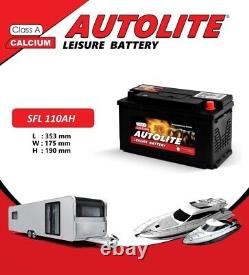
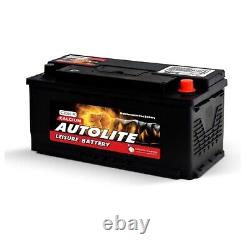
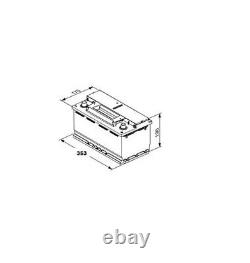
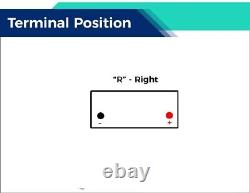

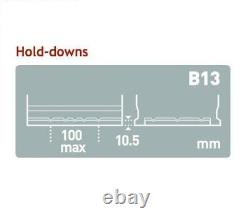
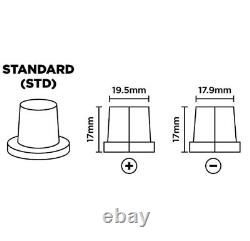
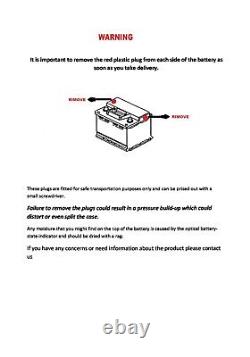
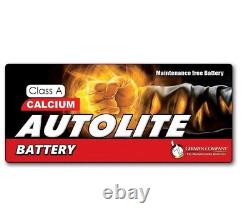
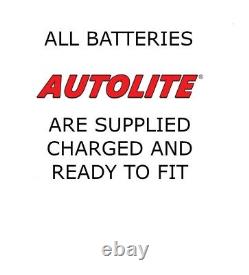

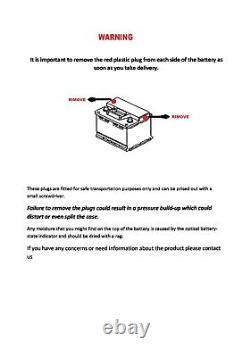


(Height is including Terminals / Posts). SUBJECT TO MANUFACTURERS TERMS & CONDITIONS. Sealed lead acid battery maintenance free and double lid. Integrated carrying handle & flame arrestor. Ideal for caravan, camping, motorhome and boat. Dual Purpose (Starting & Auxiliary) Deep Cycle Battery. Standard Leisure round terminals (Posts).
The Highlands and Islands of Scotland, Northern Ireland, Isle of Man and Isles of Scilly - postcodes IV, HS, KA27-28, KW, PA20-49, PA60-78, PH17-26, PH30-44, PH49-50, PO, ZE, BT, IM and TR21-25 are all subject to a surcharge. The Highlands and Islands of Scotland, Northern Ireland, Isle of Man and Isles of Scilly - postcodes IV, HS, KA27-28, KW, PA20-49, PA60-78, PH17-26, PH30-44, PH49-50, ZE, BT, IM and TR21-25 are all subject to a surcharge.
Remove red vent bungs (plugs) from each side of battery immediately after receiving the battery or batteries (All types of flooded lead acid batteries) even in storage condition. Red vent bungs (Plugs) are only for transportation use. If these instructions are not followed (removing red bungs immediately) battery may get bulged or explode. Leisure Battery Care & Maintenance. Leisure batteries are manufactured to the very highest of standards, but to get the very best performance, and longevity out of your batteries it is well worth following a simple care and maintenance program. Always recharge your battery as soon as you can after use after discharge and keep it as fully charged as possible during long periods of. Please must use Continual Automatic chargers with these batteries such as Fully Automatic Intelligent Connect & Forget Leisure Battery charger can be left attached to the battery for long periods and will look after your battery at correct state of charge until you need it next.Avoid completely discharging your battery (Below 10.5V) as this will reduce its cyclic lifespan. When the battery is out of the caravan/motor-homes etc. Always store it in a cool, dry and well ventilated place. From time to time make sure the terminals are free from dust and dirt, and all connections are sound.
Please must not use Trickle charge with these batteries. An equalizing charge for a 12 volt battery required that it be charged with a voltage of at least 14.4 volts for a period of at least one hour once a month, or every 10 discharge cycles. An equalizing charge prevents battery stratification and reduces sulfation, the leading cause of battery failure. Reduced performance can also be an indicator that an equalizing charge is needed. All batteries, regardless of their chemistry, will self-discharge. The rate of self-discharge for lead acid batteries depends on the storage or operating temperature. At a temperature of 80 degrees F. A lead acid battery will self-discharge at a rate of approximately 4% a week. Keeping this in mind if a 125 AH battery is stored for four months (16 weeks) winter without being charged, it will lose 80 amps of its 125-amp capacity.It will also have severe sulfation, which causes additional loss of capacity. Keep your batteries charged while not in use.

